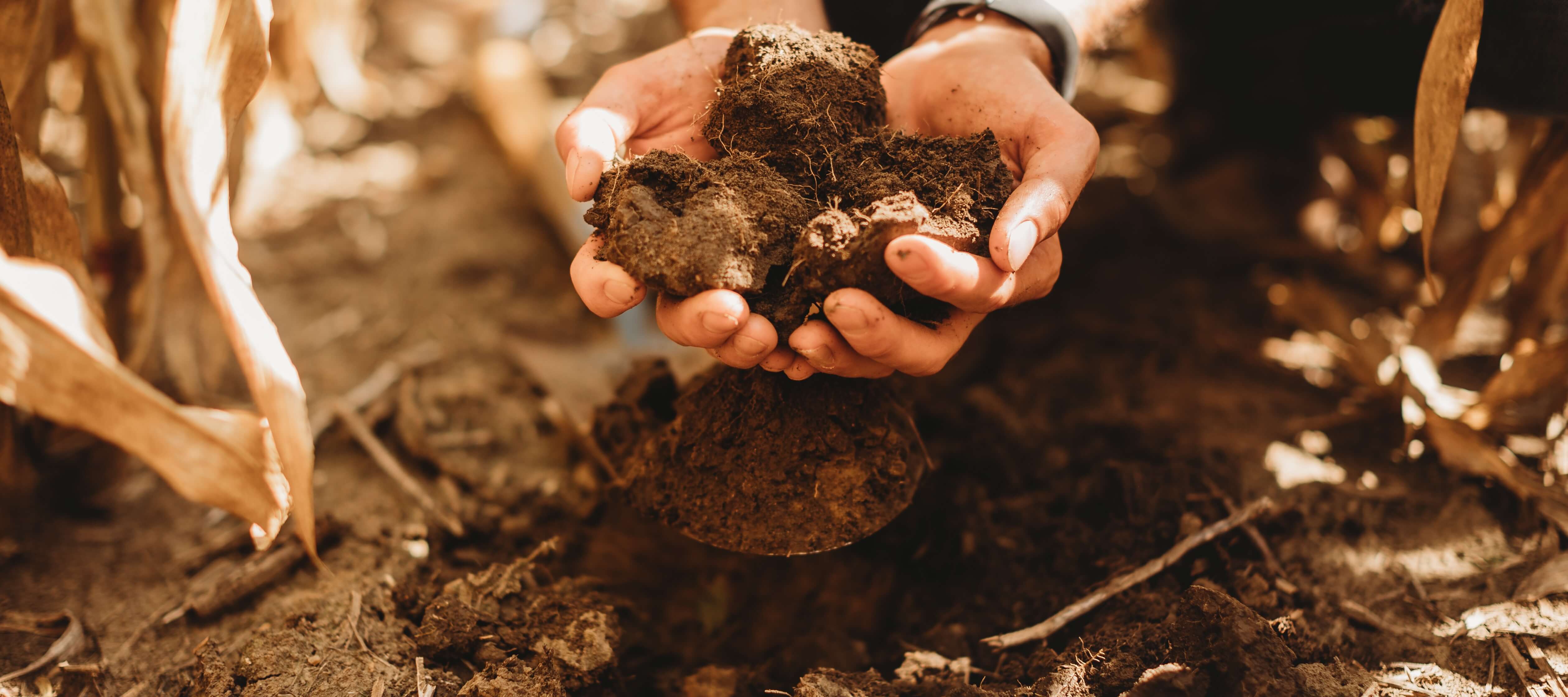How does soil carbon sequestration work
by Indigo Agriculture
Dive into how carbon is stored in soil and how carbon storage creates carbon credits.

If you remember back when you were in grade school, you probably learned about the process of photosynthesis, where plants take carbon dioxide (CO2) out of the atmosphere and release oxygen (O2). When we use the phrase soil carbon sequestration, we are talking about the process driven by photosynthesis, where CO2 is cycled from the air through plants and stored in the soil.
Industrial activities, such as construction, deforestation, transportation, and agriculture, emit CO2 into the atmosphere, either through the burning of fossil fuels or through soil disturbance that oxidizes soil carbon. As CO2 emissions increase over time, farmers are poised to find profitability in the developing carbon markets. Scientists estimate that agricultural soils can sequester over a billion additional tons of carbon each year—which would draw down about 31% of the 33 billion tons of CO2 emissions each year. Carbon farming sequestration is one of the main “negative emissions” technologies. Negative emissions that take CO2 out of the atmosphere are preferred to reduced emissions, which simply scale back the amount being emitted into the atmosphere.
What is the process of putting carbon in the soil
There are 5 steps to the carbon cycle between the atmosphere, plants and soil:
- The sun provides the light energy plants capture to perform photosynthesis.
- Plants capture CO2 from the air, keeping carbon and releasing oxygen. Carbon helps build up the plants’ leaves, stems and roots.
- Plants secrete some of the carbon from their roots in nutritious offerings to soil organisms creating a richer, healthier soil for farmers.
- Worms ingest plant residue that gets excreted as soil “casts”, which are bound together to protect plants from decomposition.
- Carbon moves deeper in the soil through a cycle of microbial consumption and transformation. This increases carbon stocks.
The cycle continues, building up carbon into more permanent forms.
So what is the best part about this? With Indigo you can actually get paid for the carbon you are capturing back into your soil. By participating in the Carbon by Indigo program and adopting carbon farming practices, you can not only increase your soil health, but reduce your costs and get paid for carbon credits. Carbon by Indigo is the only registry certified agricultural carbon credit program on the market operating at scale, so the carbon credits farmers generate via our program are high quality and the most valuable on the market.
Citations
“Soil-Based Carbon Sequestration.” MIT Climate Portal, n.d. https://climate.mit.edu/explainers/soil-based-carbon-sequestration.
This article may include information from third-party sources or other information that Indigo may not independently verify. Carbon quantification methods, processes and understandings are in their nascency and subject to change and continuous development. The information contained herein is for general informational purposes only and may be based on generally applicable assumptions that may not be applicable to any individual operation. Actual results may differ among growers and farms based on a large number of variables. Each operation should independently consider the financial implications and all potential risks and benefits of the use of any agronomic practice. Any payments under Carbon by Indigo are subject to multi-year vesting and are contingent on continued long-term maintenance of regenerative agricultural practices and soil carbon levels. All Carbon Credits generated are subject to buffer pool holdbacks required by third-party crediting; participants will not receive payments for such holdback. Neither Indigo nor its representatives or affiliates makes any representations, warranties or guarantees as to any specific outcomes (agronomic, financial or otherwise) in connection with any recommendations, calculations or predictions. Terms, conditions, limitations and eligibility requirements apply. See program agreement for additional details regarding Carbon by Indigo.
Farmers like you are getting paid to implement practices that improve soil health. With skyrocketing input costs, see how covers help.
You might also be interested in:
Neither Indigo nor any of its affiliates makes any representations, warranties or guarantees as to any specific results or outcomes, including, without limitation, with respect to soil health outcomes or any minimum amount of greenhouse gasses sequestered or number of carbon credits generated. Participation in Carbon by Indigo is subject to the terms, conditions and limitations of the program contained in the applicable enrollment agreement. Any payments under Carbon by Indigo are subject to multi-year vesting and are contingent on continued long-term maintenance of regenerative agricultural practices and soil carbon levels. All Carbon Credits generated are subject to buffer pool holdbacks required by third-party crediting; participants will not receive payments for such holdback. Not available in all areas.
500 Rutherford Ave, Boston, MA 02129 | 844.828.0240 | info@indigoag.com